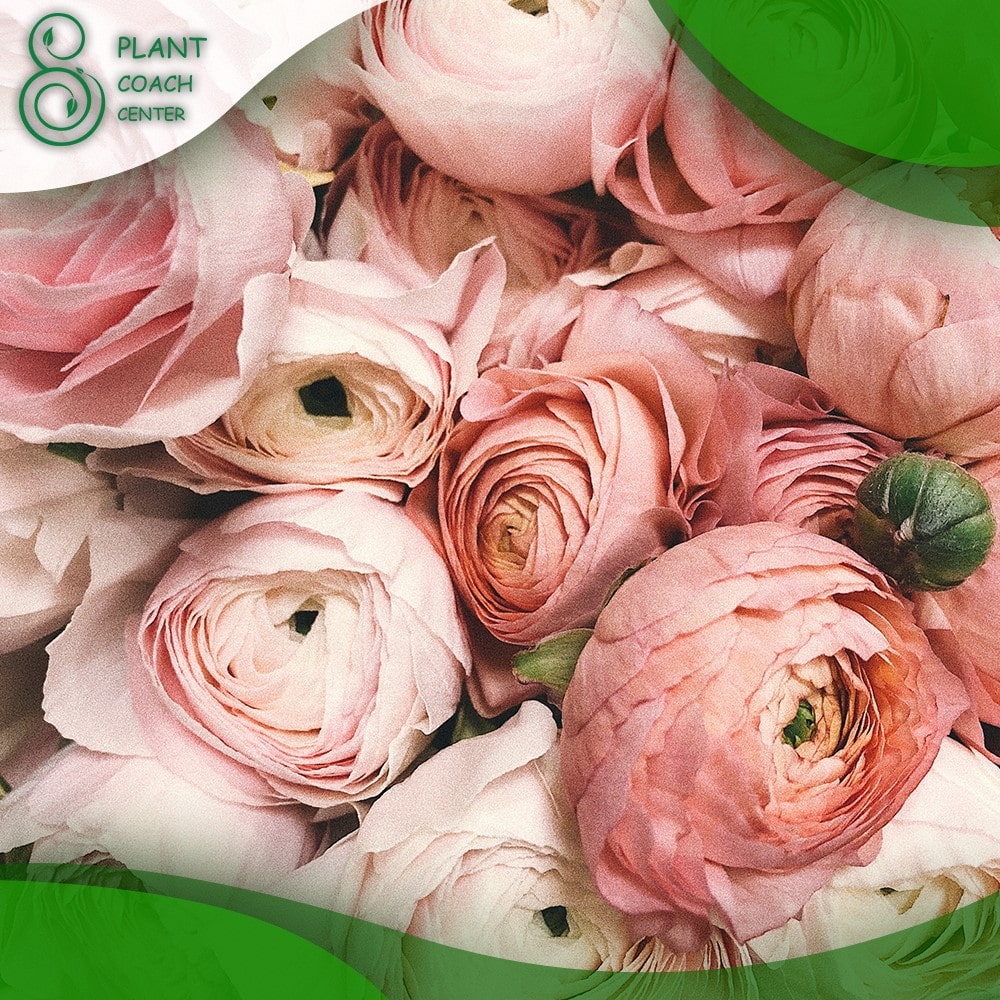When to Cut Down Peonies?
Peonies, those magnificent blossoms that grace our gardens with their vibrant hues and intoxicating fragrance, are not only a delight to behold in full bloom but also demand a gardener’s thoughtful touch as they navigate their lifecycle. As the seasons waltz by, peonies undergo a captivating transformation, each stage revealing a unique facet of their beauty.
Knowing exactly when to take up the pruner can be as intricate as the delicate petals, a dance between nature’s cues and horticultural finesse. Welcome to the world of peony pruning, where timing is everything, and understanding the rhythms of growth leads to a symphony of colorful blooms.
In this article, we’ll explore the art of knowing when to cut down peonies – a ballet of seasons, a harmony of horticulture, and a journey that uncovers the secrets to prolonging the magic these enchanting flowers bring to our outdoor sanctuaries.
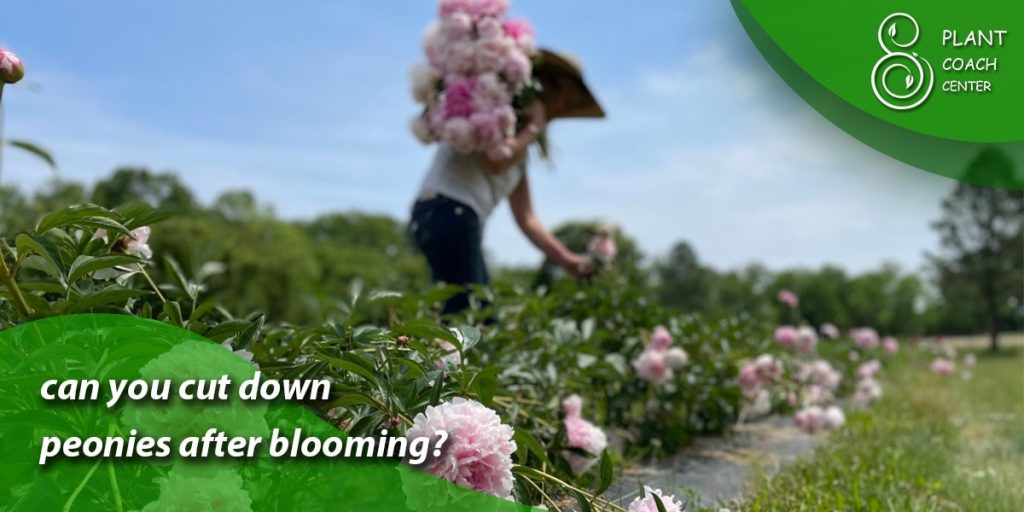
Seasonal Timing Dance
Peonies are nature’s performers, gracefully shifting through their annual growth cycle with a rhythmic precision that captivates gardeners and enthusiasts alike. To master the art of cutting down peonies, it’s crucial to understand the dance of the seasons that guides their progress.
Spring Awakening
The enchanting spectacle begins with the arrival of spring. As temperatures rise and the earth awakens from its slumber, peony shoots emerge, promising the beauty to come. During this time, the peony’s energy is directed toward establishing solid roots and lush foliage. Pruning at this stage would deprive the plant of its vital energy, delaying or inhibiting blossom formation.
Summer Splendor
As spring transitions into summer, peonies unveil their grandeur with mesmerizing blooms. The air is filled with their sweet fragrance, and bees and butterflies revel in the abundance. This is the peak of their lifecycle, a time to bask in their splendor and appreciate their ephemeral magnificence. Resisting the urge to trim at this point ensures that the flowers have ample time to complete their natural cycle and produce seeds for future generations.
Autumn Retreat
As summer wanes and autumn breezes begin to whisper, peonies gracefully prepare for their dormancy. The leaves that once provided shade and nourishment now turn into a golden cloak, hinting at the transition ahead. During this time, the plant starts to channel its energy inward, storing nutrients for the coming spring.
The temptation to prune grows stronger as the foliage begins to yellow and wither, but patience is critical. Allowing the foliage to die naturally enables the plant to extract and funnel nutrients for next year’s growth.
Post-Bloom Elegance
The final curtain call of peony blooms might signal the end of one chapter, but it also marks the beginning of another. Post-bloom elegance is a phase that invites us to embrace the faded glory of the flowers and explore the artistic possibilities that lie within.
Selective Pruning
Once the last petals have fallen and the once-vibrant blossoms have transformed into delicate seed pods, it’s time to don your gardening gloves and embark on a selective pruning journey. Choose the pods you wish to save for propagating new peonies and gently snip them away, leaving room for the plant to channel its energy into nourishing the remaining pods. This act of pruning encourages healthy growth for the future and showcases your role in the peony’s lifecycle.
Textured Beauty
The beauty of post-blooming peonies lies in their textured, weathered appearance. These fading flowers have an ethereal charm reminiscent of vintage lace and delicate parchment. Leave a few spent blooms on the plant, allowing them to stand as living sculptures that add depth and intrigue to your garden landscape. As the light plays on their faded petals, you’ll find a new appreciation for the subtle allure that comes with age.
Artful Arrangements
Don’t let the allure of peony blooms end at their garden finale. The petals may have fallen, but their stems can still find a place in your indoor spaces. Transform the remaining stalks into dried floral arrangements, celebrating the persistence of beauty beyond its prime. Dried peonies retain a soft, romantic quality that can infuse your home with a touch of nostalgia.
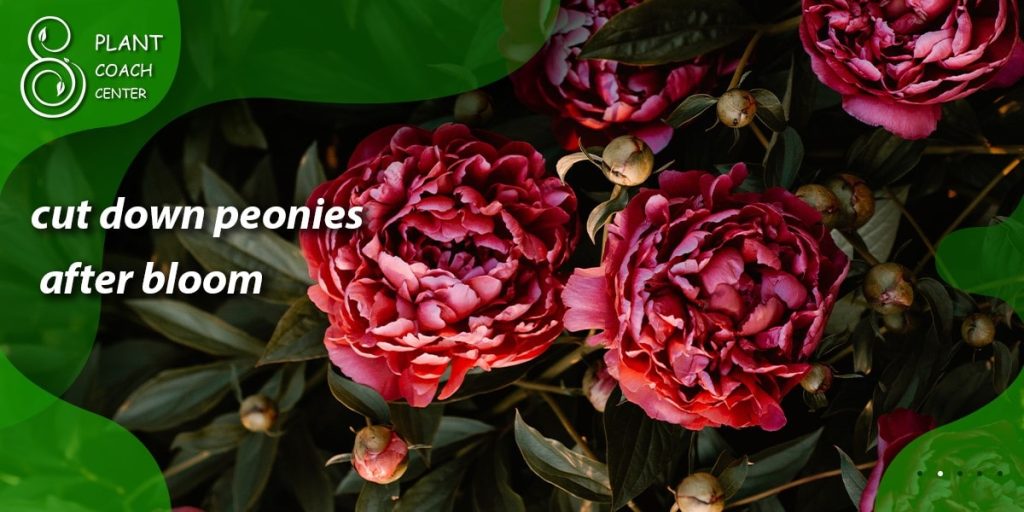
Foliage Fiesta
While the extravagant blossoms of peonies often steal the show, their foliage is equally vital to their overall health and vitality. The period after the blooms have dazzled your garden presents a unique opportunity to celebrate the verdant greenery that ensures the peony’s future displays of grandeur.
Leaf Nourishment
As the peony’s blossoms fade, its foliage takes center stage, absorbing sunlight and converting it into essential nutrients through photosynthesis. This process is crucial for replenishing the plant’s energy reserves, enabling it to flourish in the coming seasons. Instead of rushing to cut down the foliage, allow it to continue, ensuring that your peonies receive the nourishment they need to thrive.
Trimming with Tact
While the foliage is critical, that doesn’t mean trimming is off the table. Gently remove any damaged or diseased leaves to prevent potential pest or disease issues from persisting into the next growing season. However, be cautious not to strip the plant of all its foliage, as it still needs to build up resources.
Fall Rituals
As autumn approaches and the temperature begins to drop, the foliage undergoes its own transformation. The lush green leaves transition to shades of yellow and gold, a visual spectacle that signals impending dormancy. This transition is a natural part of the peony’s rhythm, and allowing the foliage to change color and wither helps the plant prepare for its restful period.
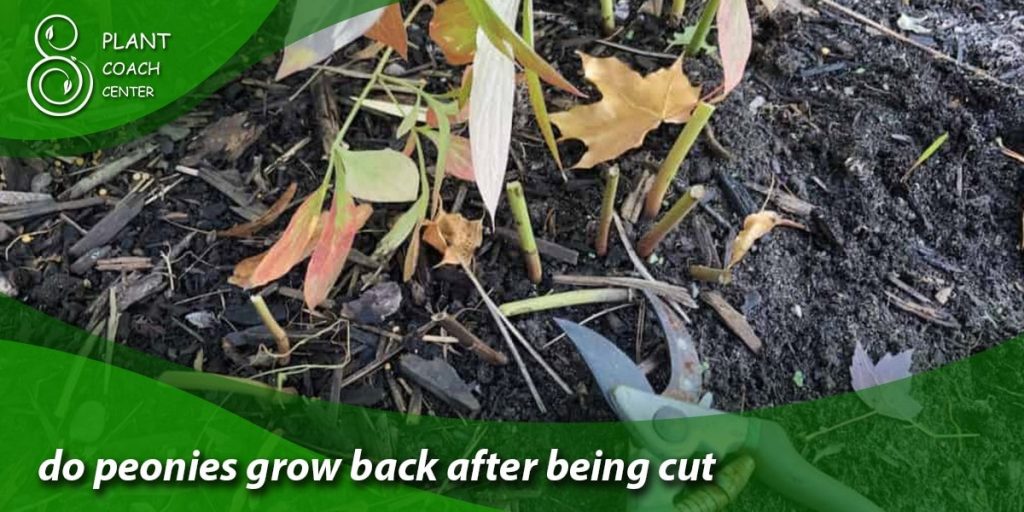
Autumn Choreography
As the vibrant hues of summer give way to the golden tapestry of autumn, peonies gracefully segue into a phase that calls for careful choreography. The dance of cutting down peonies in the fall involves a delicate balance between nurturing the plant’s growth and facilitating its transition into the restful winter months.
Fading Foliage
As the weather cools and daylight wanes, the foliage of peonies begins to lose its vigor. Leaves that once provided sustenance for the plant now prepare to bid adieu. While it might be tempting to grab the shears and tidy up, resist the urge for a little longer. Allowing the foliage to continue its natural senescence process enables the peony to draw nutrients back into the roots, providing essential seasonal nourishment.
Time for Trimming
When the foliage has turned a gentle shade of yellow and has begun to wither, it’s time to step in with your pruning tools. Carefully cut down the stems using clean and sharp shears, leaving about an inch or two above the ground. This practice prevents disease from taking hold in the decaying plant material and sets the stage for a healthy reawakening in the spring.
Mulching Maneuvers
With the stems pruned, it’s time to execute another move in the autumn choreography: mulching. A layer of organic mulch, such as straw or leaves, can be gently spread around the base of the peony plant. This mulch is a protective blanket, shielding the plant’s root system from extreme temperatures and fluctuations during the cold months.
The Frost Factor
In the delicate balance between nature’s rhythms and the gardener’s touch, the frosty kiss of winter plays a pivotal role in determining when to cut down peonies. Understanding the frost factor requires attunement to the subtle signs that Mother Nature offers as the temperature drops and the garden prepares for its chilly slumber.
Chilled Timing
As fall progresses and the days grow colder, keep a watchful eye on the weather forecast. The arrival of the first frost indicates that the peony’s growth cycle is nearing its end. However, take your time to prune immediately after the first frost. Instead, give the peony extra time to extract the last bits of energy from its foliage before you intervene.
Wait and Watch
While the initial frost may cause the foliage to wither, subsequent frosts can have varying effects. A light frost might crisp the foliage, but a more severe frost can hasten its decay. The key is to wait until the foliage is uniformly dead and shows no signs of vitality. This patience ensures you’re not cutting down prematurely and robbing the plant of its last-minute nourishment.
Pruning Prep
Once you’re confident that the foliage is beyond revival, it’s time to embark on the final act of the frost factor dance. Trim the stems to about an inch above the ground, removing any remaining leaves or damaged portions. This meticulous pruning guarantees that the plant is ready for winter hibernation and will return more robust and vibrant in the spring.

Tools of the Trade
Pruning peonies is a horticultural art that demands the right tools wielded with precision and care. Just as a painter requires the finest brushes to bring their canvas to life, a gardener needs a well-chosen set of tools to shape the peony’s growth and ensure its optimal health.
Pruning Shears
The backbone of any gardener’s toolkit, pruning shears come in various shapes and sizes. For peonies, choose bypass pruners with curved blades that cleanly slice through stems. Look for sharp, high-quality shears that make clean cuts without crushing the plant tissue.
Gloves
Gloves aren’t just for protecting your hands from thorns and prickles; they also safeguard your skin from any plant toxins. Opt for well-fitting gloves that allow dexterity while offering ample protection. Consider gloves made from breathable and durable materials that can withstand the rigors of pruning.
Disinfectant
Pruning tools should be kept clean to prevent the spread of diseases between plants. Before you start pruning, make sure your devices are properly sanitized. Use disinfectant or rubbing alcohol to wipe down the blades between cuts, especially if you’re trimming multiple plants.
Garden Twine or Tape
As you prune, you should tie up the remaining stems to keep them neat and prevent them from getting damaged during winter winds. Soft garden twine or flexible tape can be used to gently secure the branches in an organized manner.
Bucket or Tarp
A container or tarp nearby while pruning can help keep your workspace tidy. As you trim, collect the cut stems in the container or on the tarp for easy disposal. This step reduces the risk of disease transmission and makes cleanup a breeze.
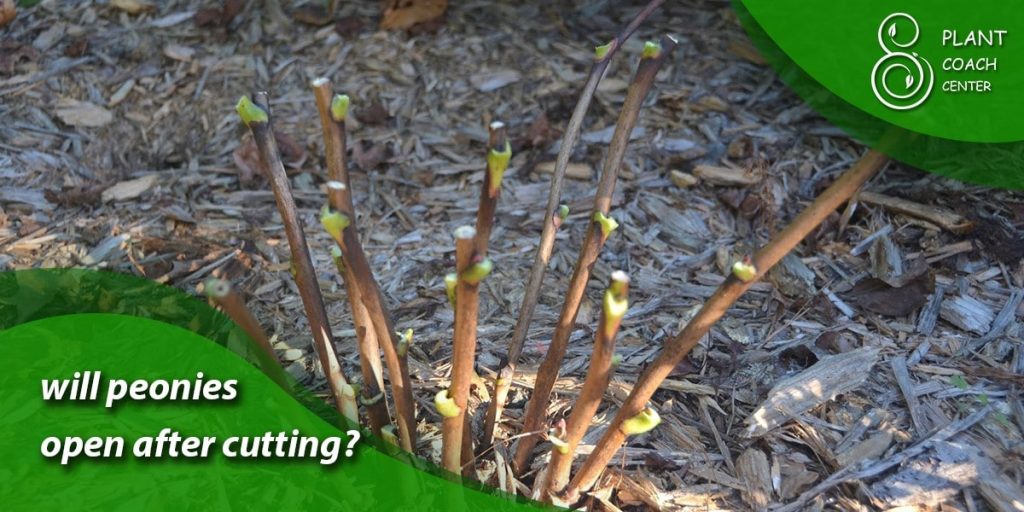
Aesthetic Pruning
Pruning peonies isn’t just a horticultural chore; it’s an artistic endeavor that allows you to shape your garden’s landscape creatively and with finesse. Aesthetic pruning goes beyond the functional aspects of trimming and delves into sculpting your outdoor space into a canvas of beauty and expression.
Sculpting the Garden
Aesthetic pruning allows you to become the sculptor of your garden, molding its visual narrative according to your artistic vision. Consider the layout of your outdoor space and how peonies interact with other plants. By selectively trimming peonies, you can create intriguing visual dynamics, height variations, and pathways that guide the eye.
Creating Focal Points
Every garden benefits from focal points that draw attention and evoke wonder. Aesthetic pruning allows you to transform peonies into living sculptures that become these focal points. By strategically leaving a few well-placed stems taller than the others, you guide the observer’s gaze toward these captivating centerpieces.
Indoor Arrangements
The artistry of pruning isn’t confined to the garden alone; it also extends into your home. Consider the creative possibilities of bringing the beauty of pruned peonies indoors. Trimmed stems can find new life in stunning floral arrangements that brighten your indoor spaces, constantly reminding you of your gardening prowess.
Harmonizing Colors
Aesthetic pruning allows you to play with color harmonies in your garden. You can create a rhythmic interplay of colors that dances across your landscape by selecting specific stems to leave or trim. The juxtaposition of vibrant peonies against complementary or contrasting foliage can turn your garden into a masterpiece of chromatic splendor.
Conclusion
In the rhythmic journey of peonies, from their exquisite blooms to the delicate choreography of seasonal transitions, we uncover the secrets to perfect pruning. The symphony of nature’s cues, paired with the artistry of a gardener’s touch, orchestrates a dance that ensures these captivating flowers’ enduring vitality and beauty.
As we navigate the nuances of post-bloom elegance, revel in the foliage fiesta, and heed the frost’s whispered guidance, we become stewards of a delicate balance that nurtures the peonies and our connection to the natural world.
The tools we wield become extensions of our intent, shaping the plants and landscapes of our imagination. So, let our gardens echo with the harmony of aesthetic pruning, inviting peonies to stand as living sculptures and focal points of wonder. To embark on this journey of horticultural artistry, visit the PlantCouchCenter.com website, where inspiration and guidance intertwine to craft garden narratives that celebrate life’s botanical poetry.
When should I prune peonies?
After the foliage turns yellow or brown in late fall.
Can I trim peonies in summer?
Avoid it; peonies need foliage to gather energy.
How do I prepare peonies for winter?
Trim stems mulch, and ensure healthy roots for the cold months.


